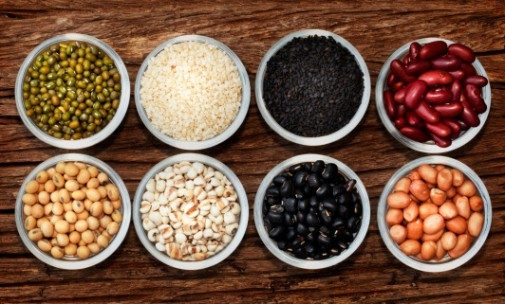How much protein should you be consuming?

Regardless of whether you are just trying to drop a few pounds or are working to fuel your body for intensive physical exercise, monitoring your diet is important to many health plans.
One important component of a healthy nutrition plan is picking the right foods to put in your body, and the key to that is the fundamental building block of muscle: protein. So how much of it should you have anyway?
“In today’s world, with rampant popularity of low-carb diets, many people are bumping up their protein in lieu of consuming carbs,” says Elizabeth Zawila, a registered dietitian at Advocate Good Samaritan Hospital’s Health and Wellness Center in Downers Grove, Ill. “However, even if we consume the higher amount of our protein needs, there is still plenty of room in our diets for healthy fats and carbohydrates.”
To take a step back, proteins are obviously one of the most important pieces of the body puzzle. The large, complex molecules help structure and regulate tissues and organs, carry molecules through the body, transmit signals and much more. Your body also does not store protein in the way it stores fats or some vitamins, so it must be consumed every day.
Having too little can clearly be a problem, but so can over-consumption. According to a 2013 study, a high level of protein consumption – especially animal proteins – had a high association with certain cancers, bone disorders, renal problems, heart disease and more.
So what is the right amount?
It comes down to the individual, Zawila says, specifically, your body weight in kilograms, and how active you are. In general, most people ages 18-61 should have between 0.8 to 1 gram of protein per kg of body weight:
| Weight (lbs.) | Grams of protein:
Age 18-61 |
Grams of protein:
Age 62+ |
Grams of protein:
Active 18-62 year old |
| 100 | 36.4 – 45.5 | 45.5 – 54.6 | 72.8 |
| 125 | 45.44 – 56.8 | 56.8 – 68.2 | 90.88 |
| 150 | 54.6 – 68.2 | 68.2 – 81.8 | 109.12 |
| 175 | 63.6 – 79.5 | 79.5 – 95.4 | 127.2 |
| 200 | 72.8 – 91 | 91 – 109.2 | 145.6 |
| 225 | 81.8 – 102.3 | 102.3 – 122.8 | 163.68 |
| 250 | 90.9 – 113.6 | 113.6 – 136.3 | 181.76 |
Zawila says this knowledge can help build out the rest of a daily meal plan. Because each gram of protein contains 4 calories, the average person usually has plenty of room for healthy carbohydrates and fats to round out their diet. In fact, carbohydrates are important right after a workout to replace the energy stores of muscles and to enhance the role of insulin in transporting nutrients into the body’s cells.
Zawila also says many underestimate how much protein they take in on an average day, so consumers should pay attention to what they eat and look at nutrition labels.
Here are some examples of surprisingly high protein sources and a reference for one serving size:
- 3oz of meat, poultry or seafood – the size of the palm of your hand, a checkbook or a deck of cards – provides 21g of protein
- One egg provides 7g protein
- 2T of peanut butter – about the size of a ping-pong ball – provides 7g of protein
- One 8oz cup of cow milk or most yogurts provides 8g of protein
- ¼ cup of cooked beans is equal to 1oz of a protein equivalent
Related Posts
Comments
4 Comments
About the Author
Nathan Lurz, health enews contributor, is a public affairs coordinator at Advocate Good Samaritan Hospital. He has nearly a decade of professional news experience as a reporter and editor, and a lifetime of experience as an enthusiastic learner. On the side, he enjoys writing even more, tabletop games, reading, running and explaining that his dog is actually the cutest dog, not yours, sorry.


















In the chart is “Grams of protein” per day? Per week? If per day, please provide more hints as to how to satisfy these large suggestions for the number of grams of protein per day.
John, those suggested servings are always per day. Most Americans eat too much protein. there is a lot of protein that is hidden in the other foods that we eat, from bread to milk to spinach.
This was very helpful. thanks you!! can you provide more foods that have protein.
Hi, I have an extensive background in nutrition, a Master in Behavioral medicine, and am a wellness coach. Mixing grains and legumes provide good protein without the meat. My favorite is Quinoa which is a great source and provides all the amino acids. You can make it up (rinsing first is essential) and keep it in the fridge. Protein amounts are listed on packages so you have to read. I even resorted to Ensure Clear after a life-changing surgery in January because none of the hospital’s protein was appetizing. There are also some good protein shakes out there- do your research.